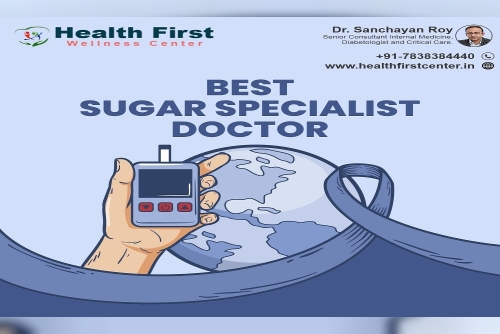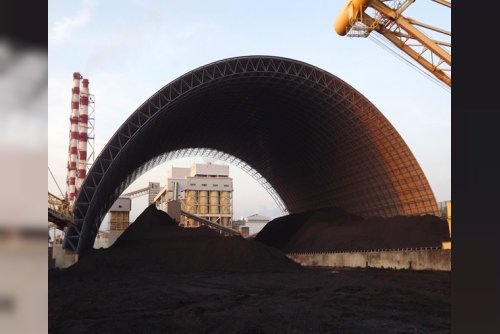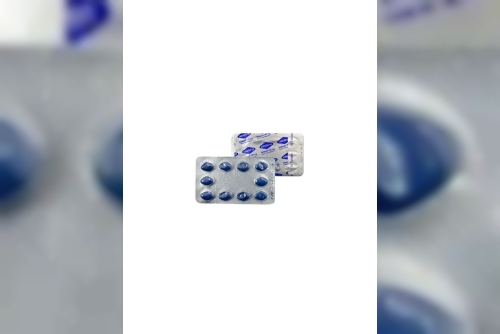Original title: What materials are medical protective suit made of? Textile Bulletin Textile Bulletin The function of the medical protective suit is to create a bacterial barrier to prevent bacterial migration and reduce cross infection. In recent years, some research institutes and enterprises have developed many medical protective suit, most of which are made of non-woven fabrics. Medical protective suit can be divided into woven fabric, non-woven fabric and composite material according to the tissue structure of the fabric; it can be divided into disposable type (disposable), limited type and reusable type according to the service life; there are three methods of finishing processing, coating and laminating according to processing composite technology. Protective suit have different properties because of their different raw materials. At present, the nonwovens used in several medical protective suit which are being sold and developed in the domestic market are mainly as follows. Polypropylene spunbonded fabric The polypropylene spun-bonded cloth can be made into antibacterial protective suit, antistatic protective suit and the like by antibacterial, antistatic and other treatments. Compared with the traditional protective suit of cotton cloth, the protective suit of polypropylene spunbonded cloth is undoubtedly a great progress. Because of its low price and disposable use, it can greatly reduce the cross-infection rate, and has been widely promoted abroad for a long time. However, the hydrostatic pressure resistance of the material is relatively low, and the efficiency of blocking virus particles is relatively poor, so it can only be used as sterile surgical gowns, disinfection cloth and other common protective equipment. Expand the full text Spunlaced fabric composed of polyester fiber and wood pulp The material has soft hand feeling, is close to the traditional textile, can be subjected to three-resistance (alcohol resistance, blood resistance and oil resistance), antistatic, antibacterial and other treatments, can be disinfected by gamma rays, and is a better medical protective suit material. However, its resistance to hydrostatic pressure is relatively low, and its barrier efficiency to virus particles is relatively poor, so it is not an ideal protective suit material. Polypropylene spunbond-meltblown-spunbond composite nonwoven fabric, i.e. SMS or SMMS Melt-blown fabrics are characterized by fine fiber diameter, large specific surface area, fluffy, soft, good drapability, small filter resistance, high filter efficiency and strong ability to resist hydrostatic pressure, but their low strength and wear resistance limit the development of their application fields to a considerable extent. However, spunbonded fabric has higher fiber linear density, and the fiber web is composed of continuous filaments, so its breaking strength and elongation are much larger than those of melt-blown fabric, which can make up for the shortcomings of melt-blown fabric. This material has the following excellent properties: ? Uniform and beautiful appearance; ? High resistance to hydrostatic pressure; ? Soft hand feeling; ? Good air permeability; ? Good filtering effect; ? Strong acid and alkali resistance. In addition, SMS nonwovens can also be treated with three resistances (alcohol resistance, blood resistance and oil resistance), antistatic, antibacterial and anti-aging to meet the needs of different uses. Polymer-coated fabric There are many kinds of coatings for protective fabrics, such as polyvinyl chloride, polyethylene, polychloroprene rubber and other synthetic rubbers. This kind of protective suit has very good waterproof and bacterial particle barrier properties and can be reused, but its moisture permeability is poor, a large amount of human sweat can not be discharged, and its wearing comfort is poor. The protective suit of using rubber-coated fabrics in Severe Acute Respiratory Syndrome (SARS) period is really a last resort. The latest development at home and abroad is to use microporous PTFE film and fabric to obtain waterproof and breathable function, but it is expensive as a disposable product. Polyethylene breathable film/nonwoven composite cloth According to the different requirements of protection grade, the nonwovens and films used are also different. The polyethylene breathable film/non-woven fabric composite material has an excellent effect of obstructing penetration of bacterial particles and liquid, the hand feeling can be adjusted by changing the softness of the composite fabric, the tensile strength is strong, the breathability is good, the comfort performance is greatly improved, the composite fabric can undergo disinfection treatment, does not contain toxic components, has a gram weight of 60-100g/m2,3 Ply Disposable Protective Face Mask, and has good cost performance. The medical disposable protective suit made of it can protect the medical staff from being polluted by pollution sources, overcome cross infection and play an effective role in protection. Respiratory Protection of Viruses — — Scientific Knowledge of Masks Textile Bulletin Textile Bulletin With the spread of the novel coronavirus, protection has become the most concerned topic, and wearing masks when going out has become the consensus of the public. Do you know all about masks? What kind of particulate masks (sometimes called disposable masks) can be used to help protect against viruses? The World Health Organization (WHO) and China's medical authorities recommend that in some cases, NIOSH approved N95, European FFP2 or equivalent protection level respirators should be used for respiratory protection of medical staff that may be exposed to viruses. N95 mask is a product certified by the National Institute for Occupational Safety and Health (NIOSH) of the United States, and its protection level is equivalent to that of medical protective masks and KN95 protective masks in line with Chinese standards, as well as FFP2 protective masks in line with European standards. It should also be noted that the virus may also be transmitted through saliva and mucous membranes, and hand hygiene is equally important. Why can particulate masks be used to filter viruses? Particulate respirators are designed to reduce the wearer's exposure to airborne particulate matter. Pathogenic microorganisms (such as pathogenic bacteria or viruses) in the air are also particulate matter, which can be filtered by particulate filter materials, and the efficiency can reach the same level as that of non-microbial particles (such as dust, smoke and fog) with the same physical characteristics (such as particle size, shape, etc.). However, unlike most particulate pollutants in industrial environments, there is no exposure limit for pathogenic microorganisms (that is, acceptable safety level), so wearing protective masks can help reduce the exposure level of pathogenic microorganisms in the air, but it can not guarantee that the wearers are absolutely not exposed, and the possibility of exposure can not be ruled out. Therefore,KN95 Face Mask with Five Layers, the possibility of infection and illness cannot be ruled out; if the wearer does not pay attention to hand hygiene, protect the mucous membrane of the eyes or implement other preventive measures, it may also be transmitted through other ways. What is the difference between the certification levels of N95, KN95 and FFP2 masks? N95 is the certification grade for respirators in the United States and is certified by the National Institute for Occupational Safety and Health (NIOSH). The filtration efficiency of N95 certified respirators for non-oily particles is not less than 95%, and the masks must be marked with the words "NIOSH" and "N95"; FFP2 is a CE certified class of respirator that meets the European EN149 standard. The filtration efficiency of FFP2 certified respirators for oily and non-oily particles shall not be less than 94%, and the respirator must be marked with the words "EN 149:2001 + A1: 2009 FFP2". All of these respirators are designed to fit tightly to the face so that air can pass through the filter material of the mask rather than leaking in over the edges of the mask. All certified masks are produced within the specified quality standard system. Is it necessary to use medical protective masks to protect against viruses? What is the difference between medical N95 and N95 respirator? Medical respirators are government-approved respirators designed to protect health care workers in specific medical environments. Both medical respirators and regular N95 respirators provide respiratory protection against particles suspended in the air. However, there are additional requirements for respirators used in medical environments. On the one hand, in order to prevent the patient from being infected during the operation or treatment, the medical mask worn by the medical staff must be able to prevent the droplets and bacteria produced by the wearer's breathing and speech from entering the operation environment, and the mask itself must be hygienic, so the number of microorganisms on the original mask can not exceed the standard, and the mask is not allowed to have an exhalation valve. On the other hand, in order to prevent the high-pressure infectious body fluids generated during surgery or treatment from splashing on the mask and penetrating into the wearer's mouth and nose, leading to the infection of medical staff, medical masks should have the ability to resist the penetration of pressurized blood and body fluids. These two requirements are actually the main requirements for surgical mask. Medical protective masks must have the functions of ordinary N95 protective masks and surgical mask at the same time, while ordinary N95 protective masks do not need to have the ability to prevent blood and body fluids from penetrating and the control requirements for microorganisms of surgical mask and medical protective masks. Therefore, it is a misunderstanding to think that only medical protective masks can prevent bacteria and viruses. If you are not a healthcare worker, you can use a regular N95 respirator or a respirator with equivalent performance to protect against high-pressure body fluid spray. Can a protective mask with an exhalation valve be used to prevent viruses? The function of the exhalation valve is to reduce the exhalation resistance of the protective mask. Medical protective masks are not allowed to be equipped with exhalation valves because open exhalation valves may discharge droplets or bacteria from the mask wearer out of the mask, which may threaten the patient undergoing surgery. Therefore, if the purpose of wearing a protective mask is to help you prevent the virus, it is no problem to choose a more comfortable protective mask with an exhalation valve. However, if a person suspects that he is infected or has been infected by a certain virus, he should take the initiative to wear a mask to protect others. The mask should not be equipped with an exhalation valve, otherwise the purpose of protecting others will not be achieved. How long can a disposable respirator be used? Replace the mask if it is dirty, damaged, or dyspnea due to increased resistance. Factors affecting the service life of masks include damaged nose clips, loose headbands, deformed masks, smelly or dirty masks, and increased respiratory resistance. When this happens, it should be replaced in time. Because viruses and other pathogenic microorganisms are infectious, there may be some infectious substances on the used protective mask. If you touch the surface of the contaminated mask with your hands, the pathogenic microorganisms may be carried to other places (such as door handles), or you may be infected by touching your mouth and nose with dirty hands. Make sure your hands are clean before and after you put on and take off the mask. If you plan to reuse your mask, store it in a clean, dry place away from any possible contamination. Particulate protective masks (sometimes called disposable masks) cannot be used after cleaning or disinfection, so it is the safest way to dispose of masks that have been exposed to infectious substances after disposable use. Can the protective mask be washed? Can it be disinfected? 3m particulate respirators (sometimes called disposable respirators) should not be cleaned and disinfected before use, because cleaning and disinfection methods usually lead to reduced filtration efficiency, or deformation of the respirator, Antivirus Disposable Mask with CE Certificate ,KN95 Face Mask, or aging of the headband components, and sometimes there are disinfectant residues, which pose a threat to the wearer. The replaceable respirator mask uses an airtight rubber or plastic mask body with a replaceable filter element. This type of mask can be cleaned or disinfected according to the product instructions, but do not clean the filter element. What is the difference between the masks used by children and adults? To help ensure protection, the respirator must fit well against the wearer's face. Adult respirators are not specifically designed and manufactured for use by children and have not been evaluated for use by children. If the child's face is small or the face does not match the mask, particles such as viruses and haze may leak from the edge of the mask because the mask and the face can not be fully sealed, which can not ensure the protective effect. Are masks that claim to kill bacteria more protective? No. There are two main factors to judge the respiratory protection effect of masks on pathogenic microorganisms in the air, one is their filtering efficiency on particulate matter, and the other is the degree of tightness between masks and the face of mask wearers. Although some products claim that the mask material will kill the bacteria on the mask (which depends on the reliability of the evaluation method), this bactericidal effect is ineffective against bacteria penetrating through the mask and leaking from the seal, thus not improving the overall effect of respiratory protection. Is a sterile respirator more protective? No. Sterilized mask means that there are no bacteria on the unopened new mask. But people are the carriers of bacteria. There are bacteria on our skin, nose and mouth. Once we wear the mask on our face, the mask will be contaminated with bacteria. Therefore, sterilized masks only show that they are clean, but do not mean that their protective performance has been improved. Therefore, China's medical mask product standards do not require product sterilization, only require that several specific pathogenic bacteria and the total number of bacterial and fungal colonies should not exceed the standard. Popularization of knowledge of medical protective materials in the current epidemic situation Original Textile Guide Editorial Department Textile Guide 00 on February 2, a total of 17205 of COVID-19 were confirmed nationwide, 361 cases died, 475 cases were cured, and a total of 21,558 suspected cases. In order to prevent the epidemic from spreading, medical masks have become a necessary item for human hands. For the medical staff who are fighting in the front line to save lives and injuries, medical masks, medical disposable protective suit and other medical protective equipment are the necessary materials to ensure their safety. How much do you know about medical protective materials? Now let's learn about medical protective materials. Standard for Medical Protective Materials Since the outbreak of the "Severe Acute Respiratory Syndrome (SARS)" in 2003, how to ensure the safety of medical staff and avoid cross infection in hospitals has become a concern, and countries have begun to develop specific standards for medical protective suit. Include the American Association for the Development of Medical Devices (Associationfor the Advancement of Medical Instrumentation, AAMI) 2003 Standard AAMI PB 70 for the evaluation of barrier properties for hygienic protective clothing; NFPA 1999, a standard developed by NFPA for medical emergency protective suit; EN 13795 developed by the European Committee for Standardization (Europe Committee for Standardization, ECS) in 2004; The standard ISO 16542 formulated by ISO organization in 2004. In addition, Canada and other countries and international organizations have also issued relevant standards. China has also formulated GB 19082 2009 for medical disposable protective suit, GB/T 38014 2019 for textile-surgical protective nonwovens, and GB 19083 2010 for medical protective masks. As well as WSB58 (the standard of the Ministry of Health of the General Logistics Department of the Chinese People's Liberation Army) for the performance evaluation of durable protective suit. Gown/surgical drape water barrier rating per AAMI PB 70 Comparison and analysis of executive standard of common mask Performance requirements for medical protective materials The basic requirements of medical protective materials are to block microorganisms, block water, ventilate, prevent static electricity, etc. The clinical application is to prevent the medical staff from being infected by the germs carried by the patient in the process of diagnosis, treatment and nursing, and to prevent the microorganisms carried by the medical staff from contaminating the patient, especially in the process of operation and other aseptic operations, so as to prevent contamination and play a two-way protective role. At the same time, the comfort and safety performance requirements of the wearer should be guaranteed under the condition of normal use. Therefore, the general requirements for medical protective materials are: (1) It can effectively block microorganisms, particulate matter and liquid; (2) It has a certain degree of breathable comfort, and after many times of washing and disinfection, it can maintain sufficient integrity and durability, and the barrier effect can also meet the basic requirements of the specification; (3) It has a certain degree of tear resistance and wear resistance, and does not de-flocculate or produce dust; (4) High protective materials must have certain resistance to chemical reagents; And (5) the multiplexing times are high, and the invention has good performance-price ratio. Structure Diagram and Protective Function of Polyester Filament Three-layer Composite Medical Protective Material Schematic diagram of non-microporous breathable anti-virus cloth Nonwoven medical protective material Because most of the pollution and hazards are transmitted through air or liquid, the traditional textile protective materials are woven by yarns, which are relatively thick, resulting in poor barrier performance of products, seriously affecting their protective performance. Secondly, traditional medical protective materials are generally made of cotton fabrics after finishing, which have complex processing technology, long process and cycle, and high cost for medical protective materials. Moreover, the traditional textile protective material is repeatedly used after high-temperature sterilization and disinfection, and the treatment cost is relatively high; in the use process, repeated washing is needed, and the fluff shed from the cotton fabric surface can become a transmission carrier of bacterial particles, so that the wound is further infected. In addition, with the improvement of living standards, people will have some psychological resistance to this reusable product, and have doubts about the effect of high temperature sterilization and disinfection, so the traditional textile protective materials are gradually replaced by disposable non-woven protective materials. High-protective surgical gown produced by processing polyester filament three-layer composite material Preparation Technology of Nonwoven Medical Protective Material 1 Spunbonded nonwoven technology Spunbonded nonwovens are prepared by direct melt spinning of polymer chips without adding any chemical adhesives and other substances in the production process, and the selected polymer materials are harmless to human body, so they are more and more widely used in the field of medical and health. Although spunbonded nonwovens meet the requirements of strength and comfort as protective materials, they are relatively weak in barrier properties. In order to solve this problem, many countries in the world are using the melt-blown superfine fiber technology for reference, and take some measures to make the spunbond nonwovens not only have a certain strength, but also ensure the formation of superfine fibers. Therefore, the fine denier spunbond technology has become a major research hotspot in spunbond technology. Bicomponent spunbond spunlace technology emerges as the times require. The products produced by this technology are opened on the basis of ordinary circular fibers. At present, 16-petal and 32-petal spinneret holes are commonly used. Therefore, the diameter of the fibers after opening is very thin, and the cross section is wedge-shaped rather than circular. The appearance and softness of the products after opening by spunlace are very similar to those of textiles. Its barrier properties are relatively better than ordinary spunbond or spunlaced nonwovens, so it can be used in medical protective materials. Cross section and SEM surface of bicomponent spunbond fiber 2 Melt-blown nonwoven technology The biggest characteristic of melt-blown method is that the fiber is very fine, the diameter is only a few microns, after self-bonding, the structure is fluffy, the porosity is high, the average pore size is small, and it has very good barrier performance. Therefore, the barrier properties of spunbonded and spunlaced nonwovens are better than those of spunbonded and spunlaced nonwovens. However, the strength and wear resistance of the product are not high because there is no long cooling drawing area in the preparation process, but the cooling is carried out at room temperature. 3 SMS composite technology Due to the characteristics that the barrier effect of the spunbond nonwoven material is not good and the strength of the melt-blown nonwoven material is not high, some people use the strength and wear resistance of the spunbond fabric as a surface layer, and use the barrier performance of the melt-blown fabric as a core layer to prepare the SMS composite nonwoven material. Considering the problem of production investment and cost, the current SMS composite technology can be divided into three categories: online composite, offline composite and one-and-half-step composite. The online compounding is to combine the spunbond and melt-blown production lines together, which has the highest investment, but the prepared product has the best performance, can be made into very thin products, the proportion of melt-blown materials is adjustable, and the air permeability and moisture permeability and barrier properties of the materials are very good, which is a very ideal medical protective material. The offline compound is to compound that prepared melt-blown fabric and the spunbond fabric in two step, the two single products can not be made too thin, and both need to pass through a fixed net, and the compound product can not be made too thin, although the barrier performance is very good, the air permeability and moisture permeability are poor, and the product can be applied to protective materials with low requirements for air permeability and moisture permeability but high requirements for barrier performance. The one-step and half-step method improves the problem of poor air and moisture permeability of off-line compounding, but the cost is lower than that of on-line compounding, and the produced product has better performance and can be used as a medical protective material. Schematic Diagram of Online SMS Principle and SMS Product Structure 4 Spunlaced nonwoven technology The non-woven material which is formed by carding short fibers and then spunlaced has great advantages in soft skin, moisture absorption, breathability and other wearing properties, but because of its poor barrier performance, it can only be used as a general medical material, and its protective performance is not very good. Spunlaced nonwoven material for preventing cross infection of door handle developed by University of Leeds, UK 5 Flash nonwoven technology The flash evaporation non-woven fabric is made of high molecular weight polyethylene (PE) as raw material and methylene chloride as solvent, which is sprayed at a high speed from a spinneret orifice under the protection of high pressure of carbon dioxide. After the solvent is quickly volatilized, the filaments are solidified, and then drawn to form superfine fibers. The superfine fibers are laid on a net forming curtain through electrostatic separation to form a fiber web, and then hot-rolled and reinforced. Compared with SMS, the flash evaporation technology uses the solution spinning method, and the solvent is a volatile organic solvent, which is difficult to recover, and the high concentration in the air is easy to cause explosion accidents; in addition, it is very difficult to control the spinning speed of the fiber in the production process. The technology is currently monopolized by DuPont (DuPont), whose flash-evaporated Tyvek protective suit combines protection,Medical Full Body Coverall, durability and comfort to protect workers from particles as small as microns, but at a relatively high cost. Principle of Flash Evaporation Nonwovens Flash-evaporated nonwovens and their protective suit Back to Sohu, see more Responsible Editor:. zjyuan-group.com
Harris's public profile

Name: Harris Harris @Harris
Bio: I am passionate about what I do and I love to express my passion for my profession. Follow me to get my updates.

Post a new article.
Comments (0).
About The Author

Harris Harris
I am passionate about what I do and I love to express my passion for my profession. Follow me to get my updates.










